 It doesn’t matter how young you are.
It doesn’t matter how young you are.
It doesn’t matter how inexperienced you are.
You can still learn a LOT at a young age.
Because, as Indiana Jones said, “It’s not the years; it’s the mileage.”
If you want to rack up your “Melon Mileage,” consider these 23 ideas. I’ve been living and working by them for years:
1. Read lots of books. Highlight, underline, take notes and annotate. When you’re done, recopy those notes onto a Word file. Then save them in a folder called “Book Notes.” Refer back to them regularly. And never loan those books to anybody. Start with one book per week.
2. Google everything. Ideas, people, YOURSELF, information, companies, competitors, trends and the like. Do it daily.
3. Ask smart people smart questions. In person, via email, online and ESPECIALLY when you’re in the audience during a speech. Have a handful of smart, open-ended toughies ready to go for any occasion. My favorite example: “What was the biggest mistake you made in your first year of business?”
4. Take notes. Listen closely to (and write down) those smart people’s answers. Keep those ideas in a separate folder called “People Notes.” Refer back to them regularly.
5. Screw up. Big time and small time. Keep a running list called, “Things I’ll Never Do Again.” Consider partnering up for this exercise. Regularly share your list with a safe, accountable person.
6. Daily appointments with yourself. Take this morning time for reflection, journaling, meditation and thinking. This quiet time will help you listen to your intuition, which will enable you to learn more about yourself. Do it for at least 15 minutes, and do it ever-single-day.
7. Be uncomfortable. Understand, step out of, expand and LOVE your comfort zone. Daily. Because you can’t learn when you’re comfortable. Also, ask yourself, “What three situations make me the most uncomfortable?” Make it your goal to intentionally involve yourself in ONE of those situations over the next 30 days. (As long as it’s safe, legal and appropriate.)
8. WRITE. Chronicle, journal, blog, diary, (whatever … just WRITE) your thoughts, experiences, feelings, emotions, philosophies and concerns. Daily.
9. Just do stuff. Don’t talk about it. Don’t plan. Don’t take lessons. Just go. The best way to learn how to do something is to DO that something. Action is eloquence.
10. Make lots of lists. Best creativity tool EVER.
11. Eclectic education. Once a month, go to Borders. Buy a cup of coffee or a brownie. Spend an hour or two reading every magazine on the rack. Especially ones you wouldn’t normally read, i.e., Tiger Beat.
12. Hang with super smart, cool and creative people. Ask yourself, “How smart are the five people I spend the most time with?”
13. Find out where you suck. Because that’s the only way you’re going to get better.
14. Learn how you learn. Visual? Aural? Kinesthetic? Take a personality assessment if you have to. Anything to identify your learning style. This will help you better educate yourself in the future.
15. Mentors. Three types. Directly, through an official program like SCORE. Casual, with a colleague, friend or advisor. And indirectly, via books, audiotapes and online content. Mentors are GOLD. And don’t forget to take lots of notes!
16. Motivate your melon. How many books on creativity did you read last month? How many courses in creativity did you take last year? Train your brain. Daily.
17. Grill yourself. Pretend you’re on an interview. Ask yourself tricky questions like, “Who can hurt me the most?” and “If everybody did exactly what I said, what would the world look like?” REMEMBER: questions are the basis of all learning.
18. Bedtime Brain Boosting. Keep a stack of index cards and a Sharpie next to your bed. Every night before you hit the hay, think of ONE lesson you learned that day. Jot down a few words on the card. Keep them in a pile. Then, once a month, lie in bed with all your lesson cards. Take a few minutes to review everything you’ve learned.
19. Quotations. Any time you hear a great quotation, movie line, proverb, psalm or old saying, write it down. Keep a running list called “Quotations” and file it in a folder next to your “Book Notes” and “People Notes.”
20. Teach. Other that writing, teaching is probably the best way to learn. Share your notes, ideas and lessons learned with others. When you pass your wisdom on, you learn it better yourself. Teach via writing, blogging, speaking, talking or mentoring.
21. Talk. Conversations are laboratories. People are libraries. So, exponentially increate your activity level. Especially with diverse individuals. And maintain an expectation that you will learn at least ONE thing from every person you encounter.
22. Unlearn. Make a list of ten childhood assumptions taught by your parents, teachers and faith leaders … that ended up being totally bogus. Use affirmations and self-talk to reprogram yourself. REMEMBER: part of learning is also UN-learning.
23. Extract. Lessons from others, that is. For example, any time someone tells a story, follow up by asking, “So, what lessons did you learn from that experience?”
Now.
You probably noticed a few commonalities among the items on that list.
Namely, “writing” and “daily.”
Guilty.
That’s because writing is the basis of all wealth. (Gitomer)
And that’s because you can’t change your life until you change something you do daily. (Maxwell)
SO REMEMBER:
It doesn’t matter how young you are.
It doesn’t matter how inexperienced you are.
All that matters is that you’re willing to learn.
And if you follow even a handful of these suggestions, in no time you’ll start hearing people say, “How did you learn so much at such a young age?”
LET ME ASK YA THIS…
How did YOU learn so much?
LET ME SUGGEST THIS…
Share your list of secrets here!
* * * *
Scott Ginsberg
That Guy with the Nametag
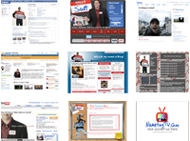 Are you a friend of The Nametag Network?
Are you a friend of The Nametag Network?
Read more blogs!
Rent Scott’s Brain!
Download articles and ebooks!
Watch training videos on NametagTV!
Make a name for yourself here…
 All creativity begins with curiosity.
All creativity begins with curiosity. Enjoy this post?
Enjoy this post?
 (Read part one of this series
(Read part one of this series 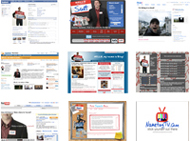 Are you a friend of
Are you a friend of  When you’re writing…
When you’re writing…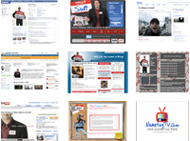 Are you a friend of
Are you a friend of  Ideas are your major source of income.
Ideas are your major source of income. Are you a friend of
Are you a friend of  It doesn’t matter how young you are.
It doesn’t matter how young you are. Are you a friend of
Are you a friend of  Creative professionals MUST exist in a creative environment.
Creative professionals MUST exist in a creative environment. 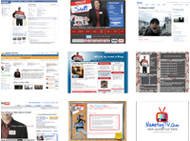 Are you a friend of
Are you a friend of 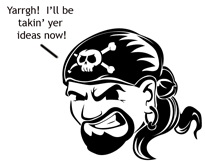 You’re a creative professional.
You’re a creative professional.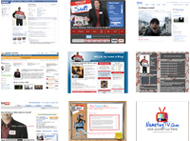 Are you a friend of
Are you a friend of  Every day when I slap a new nametag on my shirt, I remind myself of what Einstein once said:
Every day when I slap a new nametag on my shirt, I remind myself of what Einstein once said: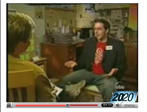 Are you the luckiest person you know?
Are you the luckiest person you know?
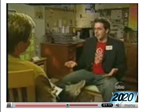 Are you the luckiest person you know?
Are you the luckiest person you know?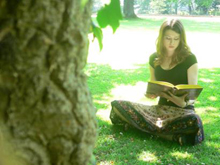 Have you ever bought a book, read it, then threw it on your shelf and never thought about it again?
Have you ever bought a book, read it, then threw it on your shelf and never thought about it again?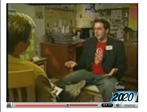 Are you the luckiest person you know?
Are you the luckiest person you know?